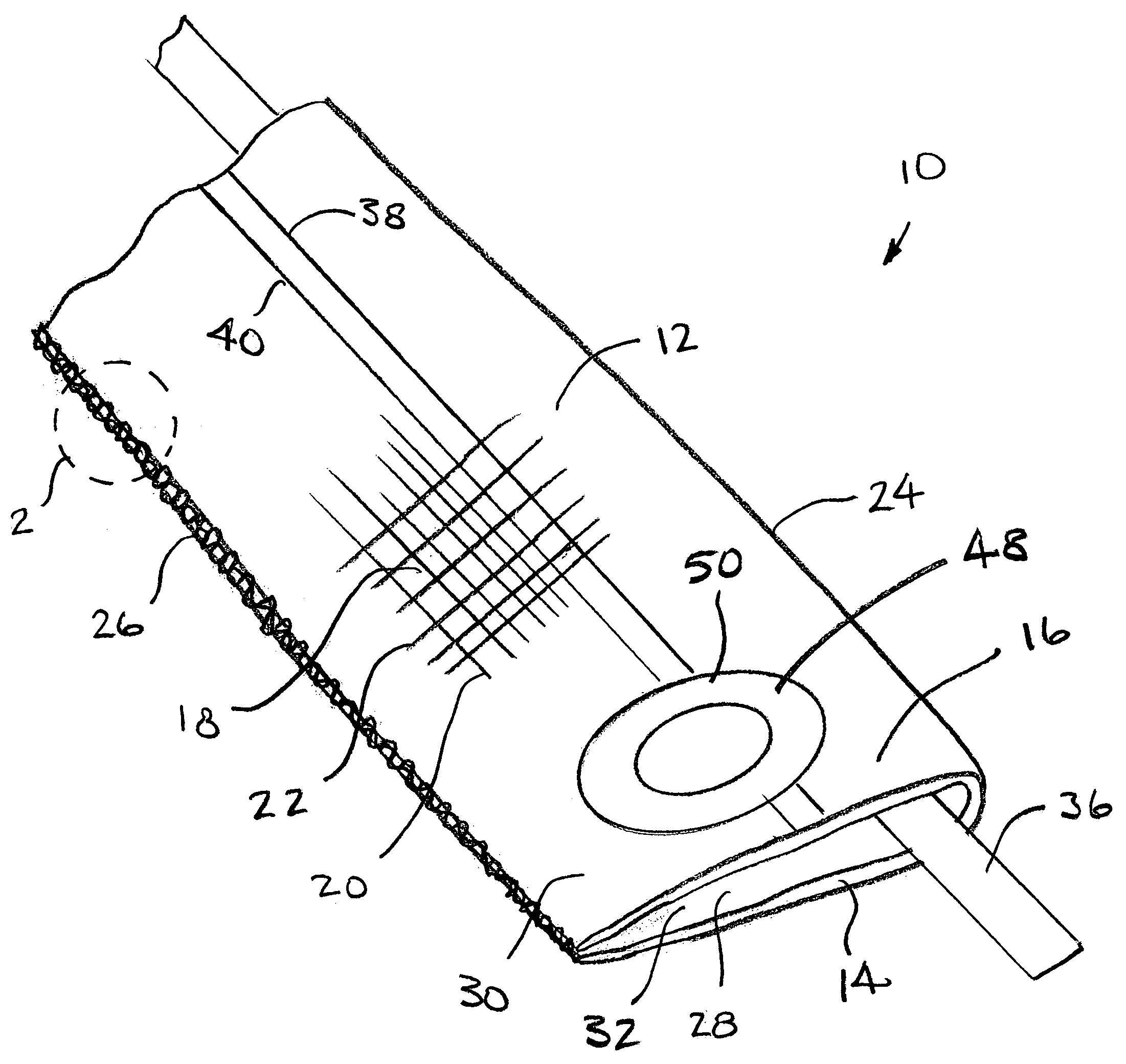Cable guide sleeving structure
a sleeving structure and cable guide technology, applied in the direction of insulated conductors, cables, instruments, etc., can solve the problems of difficult installation of lines within existing ductwork, difficult positioning of additional cables, and inability to use them for additional cables, etc., to facilitate the drawing of the sleeving structure through the du
- Summary
- Abstract
- Description
- Claims
- Application Information
AI Technical Summary
Benefits of technology
Problems solved by technology
Method used
Image
Examples
Embodiment Construction
[0032]FIG. 1 shows an elongated sleeve structure 10 according to the invention. Sleeve structure 10 comprises a flexible sleeve 12 comprising opposed layers 14 and 16 of woven resilient filaments 18. Filaments 18 comprise warp yarns 20 and fill yarns 22, the fill yarns being common to both layers 14 and 16. The opposed layers 14 and 16 have a common seamless edge 24 and are joined to one another along a second edge 26 formed, as best shown in detail in FIG. 2, by interlooping successive traverses of the fill yarn 22 with one another. In some cases, depending upon the mode of manufacture, a binder yarn 23 is used to facilitate closure of the second edge 26. The binder yarn 23 traverses lengthwise along the edge and loops around pairs of fill yarn loops 22. Preferably, as shown in FIG. 1, the opposed layers 14 and 16 are of equal width and comprise sidewall portions 28 and 30 surrounding and defining a central space 32. The opposed layers 14 and 16 are nominally in a substantially fla...
PUM
| Property | Measurement | Unit |
|---|---|---|
| diameter | aaaaa | aaaaa |
| diameter | aaaaa | aaaaa |
Abstract
Description
Claims
Application Information
 Login to View More
Login to View More - R&D
- Intellectual Property
- Life Sciences
- Materials
- Tech Scout
- Unparalleled Data Quality
- Higher Quality Content
- 60% Fewer Hallucinations
Browse by: Latest US Patents, China's latest patents, Technical Efficacy Thesaurus, Application Domain, Technology Topic, Popular Technical Reports.
© 2025 PatSnap. All rights reserved.Legal|Privacy policy|Modern Slavery Act Transparency Statement|Sitemap|About US| Contact US: help@patsnap.com



